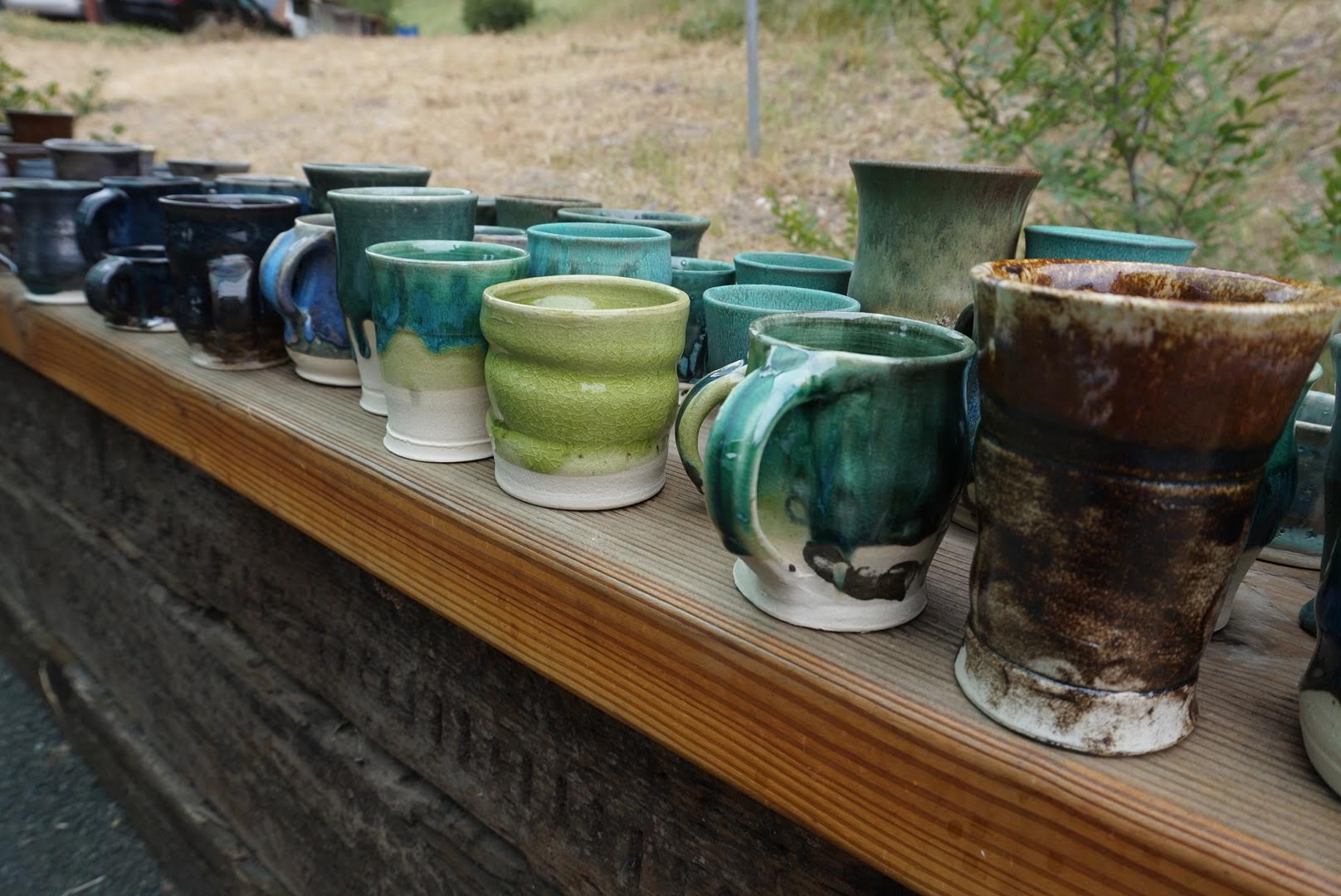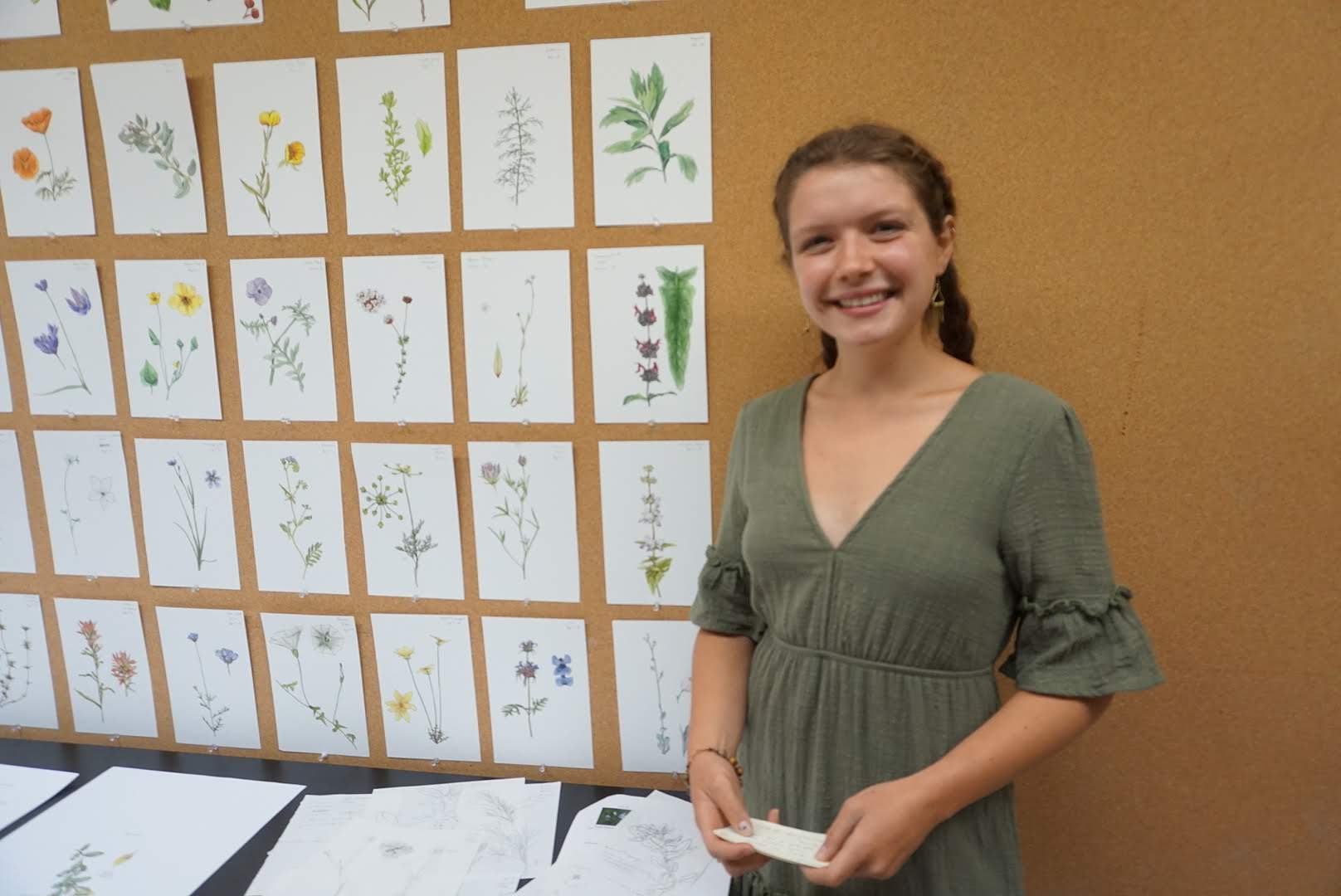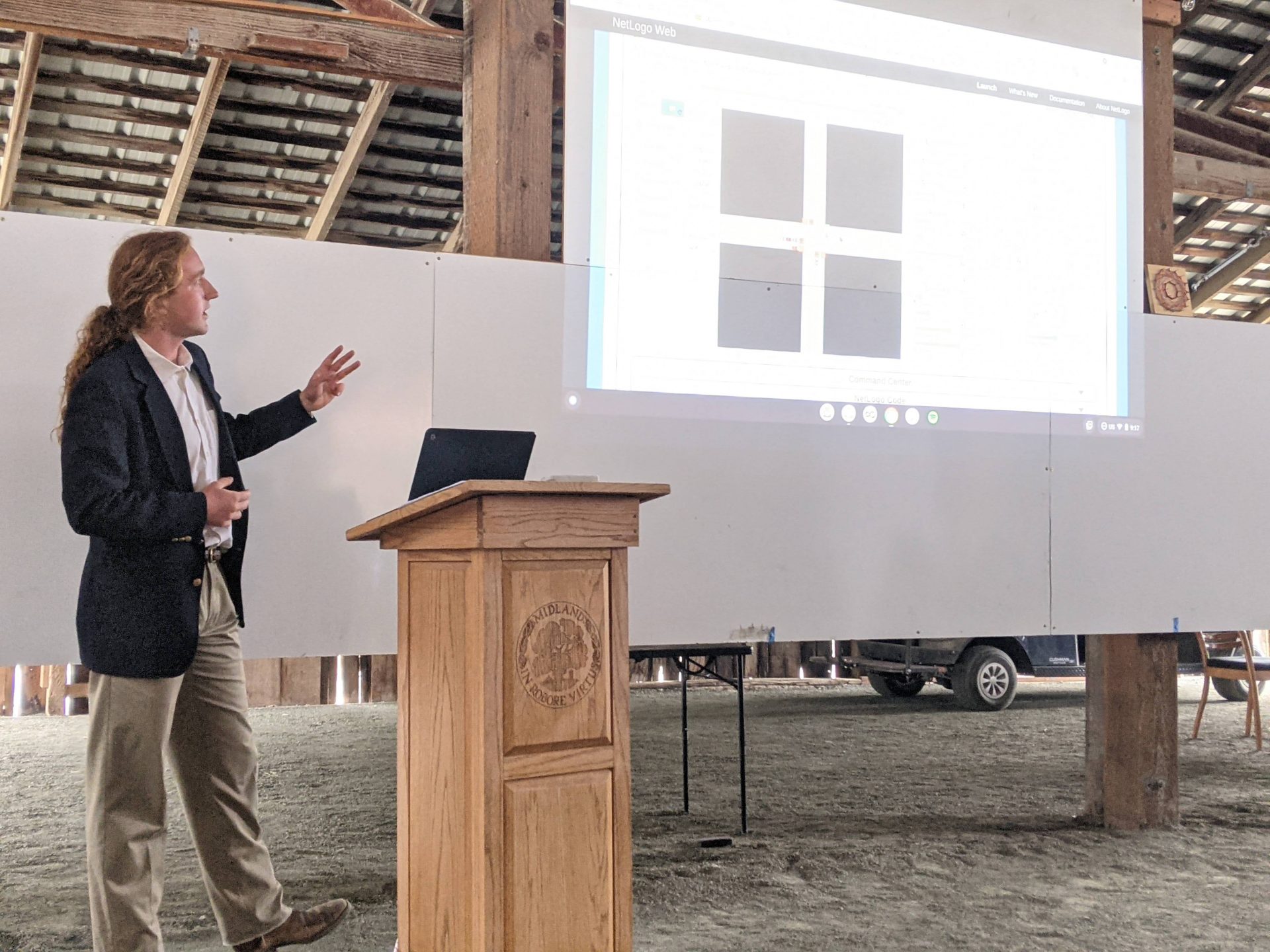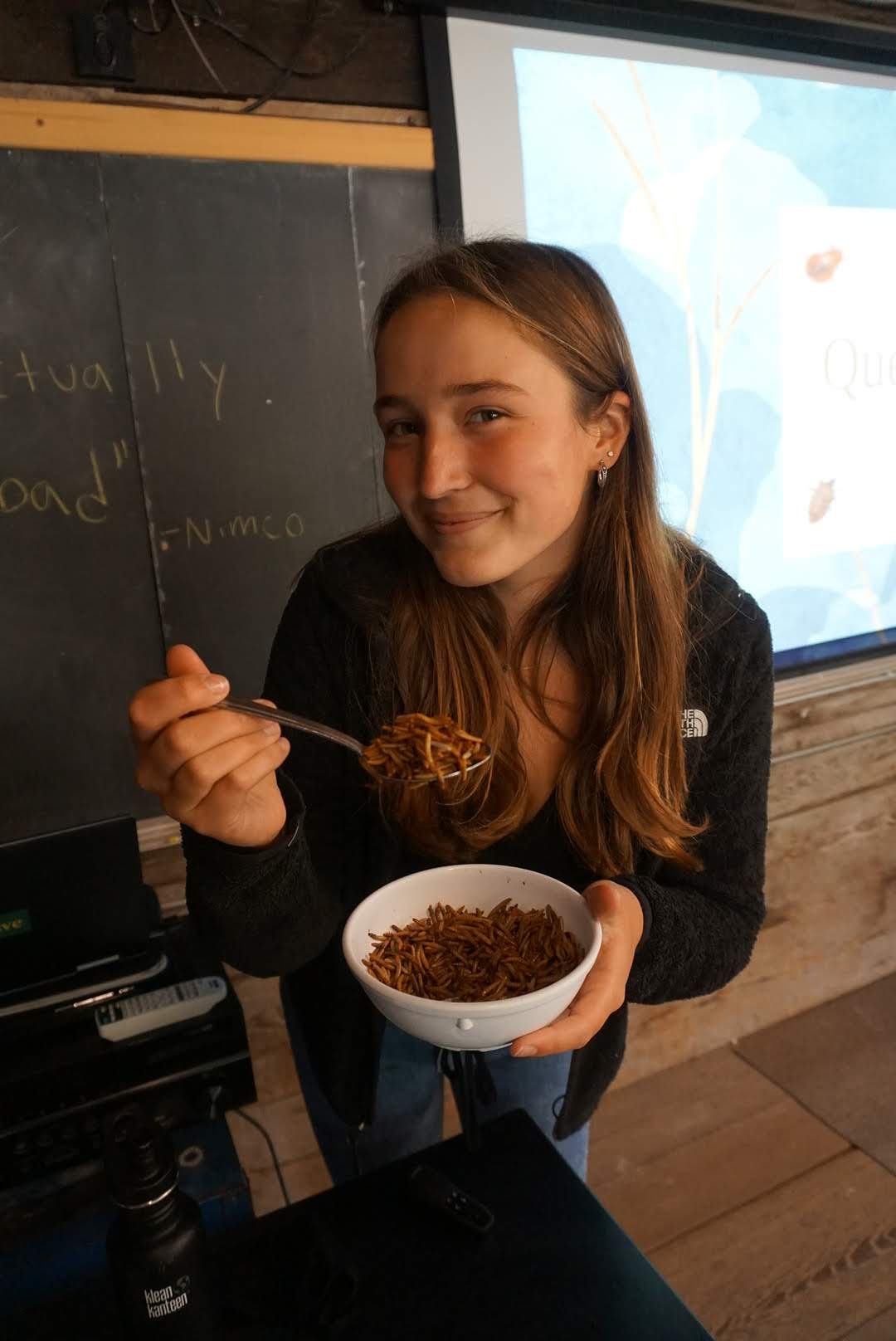Contact Information
-
MAILING : P.O. Box 8, Los Olivos, CA 93441
Midland's 2021 Senior Projects
Spring 2021
Could edible insects be a realistic protein supplement for a household? How can agent-based modeling systems make for more efficient traffic intersections? What does the perfect dining hall mug look like?
These are just a few of the questions that the Class of 2021 set out to answer in their senior projects.
Every Midland student completes a senior project or thesis in their final year. The senior project is an opportunity for seniors to design an independent, project-based course addressing a line of inquiry in an area of their own interest. It is a semester-long endeavor that requires planning, time management, craftsmanship, problem solving, and student agency.
This year, five students embarked on this adventure. Here’s what they did:
Bobcat Bend: A Midland Trail | by Luke Brennan

Luke ’21 shows a group of students and faculty the new trail.
Trail work has long been part of Luke ’21’s Midland experience, and when given the opportunity to complete a Midland Senior Project, he immediately set his sights on building a new Midland trail as a way of “creating something beautiful from hard work and also add[ing] a treasure to the community that could last a lifetime.”
Identifying Midland’s Rain Gauge trail, which he had worked on as a sophomore, as a tricky trail with a sudden end along Figueroa Mountain Road, he was inspired to create a “practical trail connecting Res Road to Rain Gauge trail.” Creating a trail from start to finish was an entirely new process, and Luke completed significant research, including learning how to use CalTopo, “a mapping software which allowed [Luke] to navigate the Midland terrain digitally and find the most ideal descent from Rain Gauge’s elevated location.” He flagged (and re-flagged) the trail multiple times before determining the best path.
From there, he gathered a team composed primarily of other Midland students, taught them how to properly use trail work tools, and headed off to build the trail. Over the course of Midland’s MIDterm (a week mid-semester dedicated to hands-on, experiential projects), Luke led his crew through an intense and fun trail building agenda. With priorities such as causing minimal damage to tools, improving trail quality through thoughtful design, negating erosion and easing slope intensity, Luke leaned into trail building techniques such as drainages, stabilizers, switchbacks and steps. Finally, after working long hours with his trail building team, Luke completed a beautiful new Midland trail: Bobcat Bend trail.
Ceramics: Growth of Shape in Cups | by Max Rasilla
A few years ago, a Midland ceramics class made a beautiful set of mugs and cups for Stillman, Midland’s dining hall. Though much more popular than the original store-bought beverage holders, the ceramic pieces struggled to hold up to community use.
Through thoughtful research and hands-on experimentation, Max ’21 used his Midland Senior Project as an opportunity to create a mug that would be “durable, last through the washing machine and handling, as well as be comfortable to hold and drink from.” He threw cup bodies of all shapes and sizes before realizing that his goal to create durable and comfortable mugs required careful attention not just to the shape of the cup, but to the “handles and how they would affect the shape of the cup.”
Using porcelain clay, rather than the typical dover white stoneware of Midland’s ceramic studio, improved the overall durability of his mugs which, in tandem with thoughtful design elements and clever glazing solutions, Max presented a variety of different mugs and handles to the Midland community.

A collection of mugs by Max ’21
Using feedback from the Midland community to narrow in on the final mug design, Max produced twenty-four mugs ready for Stillman use; each mug is slightly different to accommodate different hand sizes within the Midland community.
Midland Spring: A Student's Guide | by Macy D'Attile

Macy ’21 shows off the illustrations that fill her guide.
Deeply inspired by Midland’s 2,860 acre campus and time spent learning about the native flora of the property during the freshman Midland 101 class — a scientific and humanities-focused introduction to Midland’s property — Macy ’21 knew early on in her time at Midland that she wanted to dedicate her Senior Project to researching and documenting (through illustration & writing) the flora of Midland’s campus. She spent the majority of her free hours during her senior year “scouring Midland’s trails for plants,” taking “time to sit and draw the plants where [she] had found them” in their native habitat.
Soon, time became tighter and she found herself capturing images on a camera and sketching them from photo memory, ultimately watercoloring each wildflower specimen and writing a 100-150-word article about each meticulously studied detail. She quickly learned new photoshop skills to transfer her artwork into a digital format, and began putting together a ready-to-print document that would eventually wind up (she hoped) as a bound book of forty-six Midland plants.
With some generous guidance from Jeff Goddard, Midland’s Marine Biology & Field Ecology teacher, and the support of local printer John Nygren of JanoPrint, she is currently in the process of final book review steps and looks forward to a first print-run of 150 copies, the majority of which she plans to gift to Midland students, faculty, and to leave as a resource for future Midland 101 students and all future visitors to Midland’s campus and trails. A gift that will have incredible meaning for many, many generations to come. Be sure to check out Macy’s book for yourself!
Modeling in Agent-Based Simulation | by Porter Barnes
As the Santa Ynez Valley grows in popularity both as a place to live and a tourist destination, an influx of traffic could threaten the “essential rural feel” of the area. Porter ’21’s Midland Senior Project seeks to understand a potentially “simple solution” to the overcrowding of the SYV’s roadways: modifying light patterns to improve our local intersections. Using an agent-based modeling system called NetLogo, Porter “investigates one particular intersection between the Alamo Pintado and 246 to discover what light patterns reduce the queue length (number of cars waiting) and sojourn time (time to get through the intersection).”
Using five main components: environment, car-behavior, light patterns, view restrictions, and data collection, Porter discovered three key recommendations through his model. “Firstly, a directional light pattern is essential in the high-flow directions. Secondly, the difference between parallel and directional in the low-flow directions is nominal. Thirdly, the light lengths should be based on regularly updated traffic studies that match the correct flow ratios to the lights.” With understanding of the limitations of his model and areas for future improvement, “specifically adding left-hand turn lanes, driver-variance, and adaptive light patterns,” Porter wraps up his project paper recommending further research prior to construction or policy change.

Porter ’21 presents his findings to his classmates.
Edible Insects: Food of the Future | by Melia Collard

Melia ’21 scoops up a bite of insects.
Inspired by a UC Santa Barbara talk led by graduate student Mckenzie Wade and her own rural childhood in Northern California, Melia drew from her “deep respect and love of the environment” to dive into her Midland Senior Project query: “exploring a possible solution to the negative environmental impacts of our global protein industry.” Excited to learn more about entomophagy (eating insects), Melia set out to “build [her] own successful mealworm farm, care for the farm and observe the growth process, and to use the tangible farm work along with some supplemental research to answer the questions ‘could edible insects be a realistic protein supplement for a household?’ and ‘what would or does insect farming look like on a larger scale in the United States?’”
Over the course of Midland’s spring semester, Melia actively managed a farm of over 2000 mealworms while completing her larger research on insect farming and recipes and restaurant menus. After a few bumps in the road (namely, navigating mold growth in her farm), she was able to host an Experiential Saturday for Midland students where she “organized and presented [her] project to ten other students through a combination of slideshows, taste tests, cooking competitions, and miniature bug farm building.” Her research led her to the conclusion that her small scale farm couldn’t provide enough protein for a small household, but that a larger scale set up could feasibly provide “a sustainable alternative to traditional meat, such as beef and pork, since the insects could subsist eating food waste from the household.” She remains curious about the opportunity to introduce entomophagy on an industrial scale and the ability for our food industry overall to pivot quickly to “meet the rapidly changing needs of the environment in the midst of the climate crisis.”
Continue exploring the Midland experience